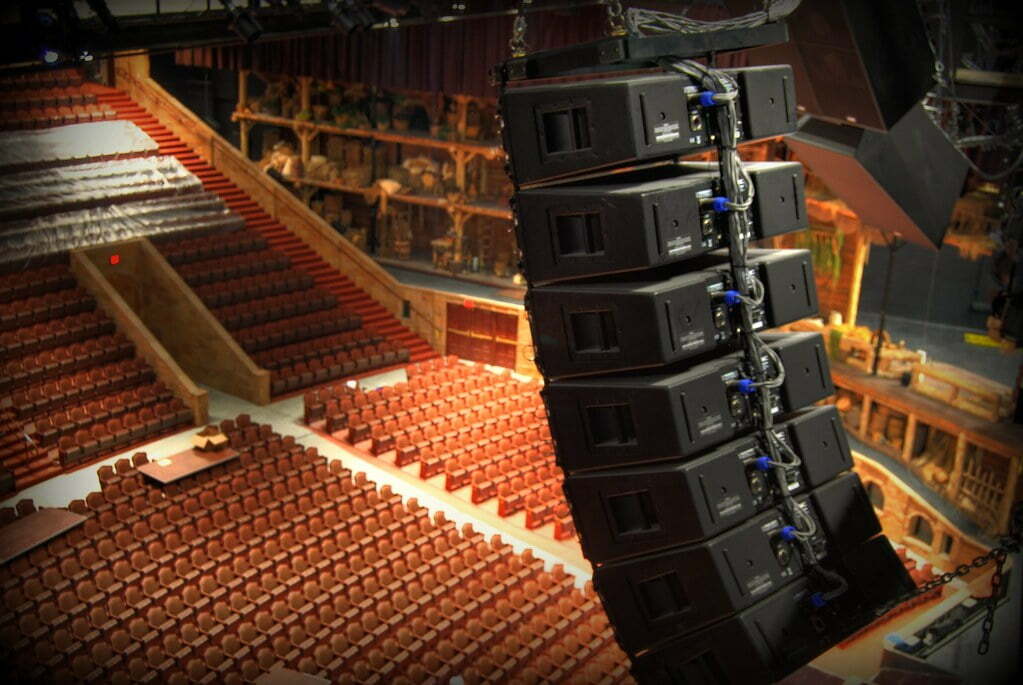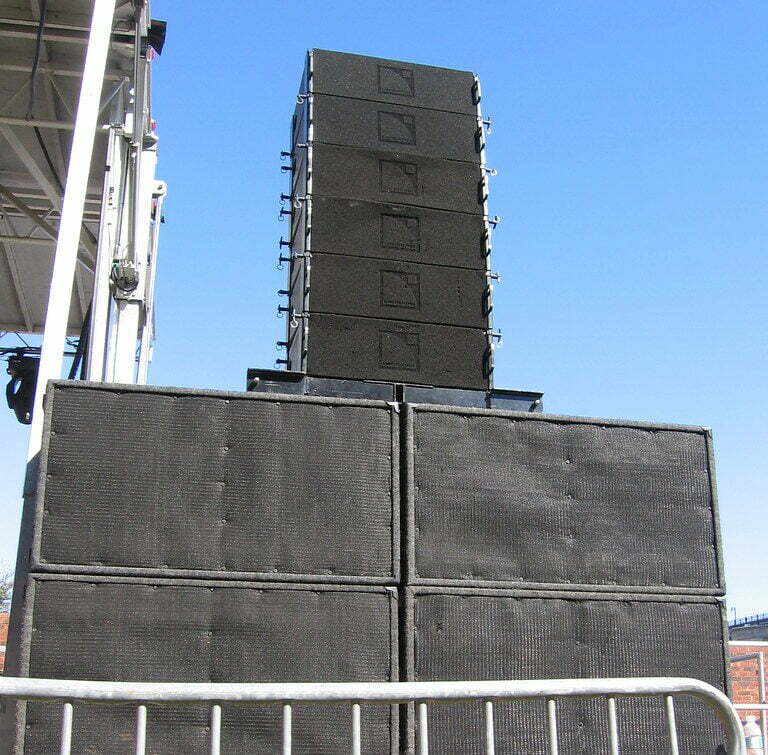
Line array loudspeaker systems are used over point source systems in certain scenarios where a more focused and directional sound coverage is desired. The main advantage of line arrays over point source systems is their ability to provide a more consistent sound pressure level (SPL) over a greater distance and over a larger area.
Line arrays are typically made up of multiple small drivers that are mounted in a vertical line. The sound waves from these drivers combine and interact in such a way as to create a directional beam of sound that can be aimed in a specific direction. This helps to reduce the amount of sound that is reflected off of walls, ceilings, and other surfaces, which results in a more controlled and consistent sound field.

Point source systems, on the other hand, are typically made up of a single large driver, or a small number of drivers that are mounted in a traditional speaker cabinet. The sound waves from these drivers tend to spread out in all directions, which can lead to a more diffuse and less controlled sound field. This can result in areas of the room where the sound is either too loud or too quiet, and where the frequency response is uneven.
Another drawback of point source systems is that they tend to have a limited coverage area. Point source systems are typically designed to provide optimal sound quality over a relatively small area, typically in front of the speaker. As you move further away from the speaker, the sound quality and SPL decreases, which can result in listeners at the back of the room not being able to hear the sound clearly.
Point source systems also tend to have a more limited frequency response compared to line arrays. Point source systems are typically designed to provide a flat frequency response over a limited frequency range, whereas line arrays can provide a more consistent and accurate frequency response over a wider frequency range, due to the multiple drivers being used in the system.
Moreover, point source systems can also be less efficient than line arrays, as they tend to require more power to produce the same SPL as a line array system. This can be particularly problematic in larger spaces, where multiple speakers may be required to provide adequate coverage.
So, there are several situations where line array systems are commonly used, such as in large concert venues, theaters, and other performing arts spaces. They are also used in conference and event spaces, and for outdoor events such as festivals and concerts. Because in these scenarios, line arrays provide a more focused and directional sound coverage, which helps to ensure that everyone in the audience can hear the sound clearly and consistently, regardless of their location within the space.
But, it is important to note that line array systems are not always the best choice for every situation. There are some applications where point source systems may be more appropriate, such as in small intimate performance spaces or for speech reinforcement in conference and event spaces. In the end, the choice between line arrays and point source systems will depend on a variety of factors, including the size and shape of the space, the type of event being held, and the desired sound quality and coverage.

